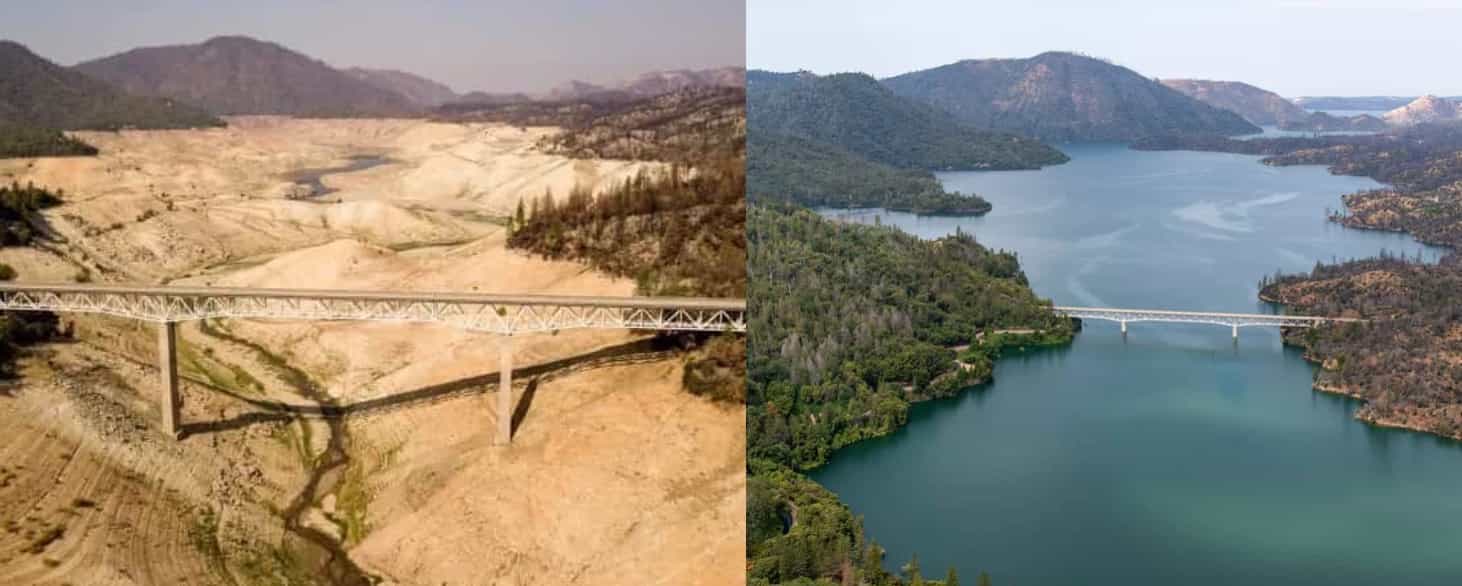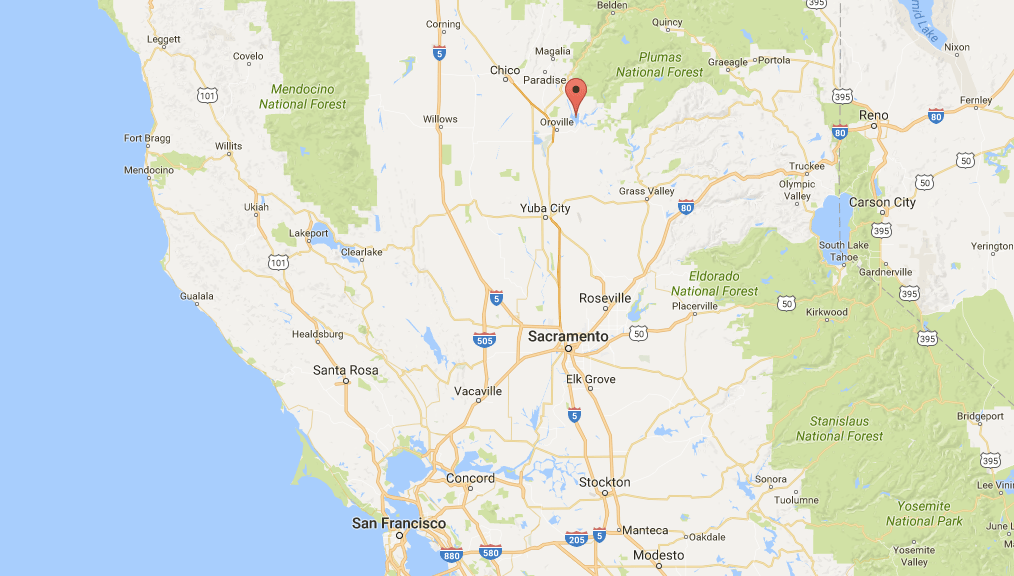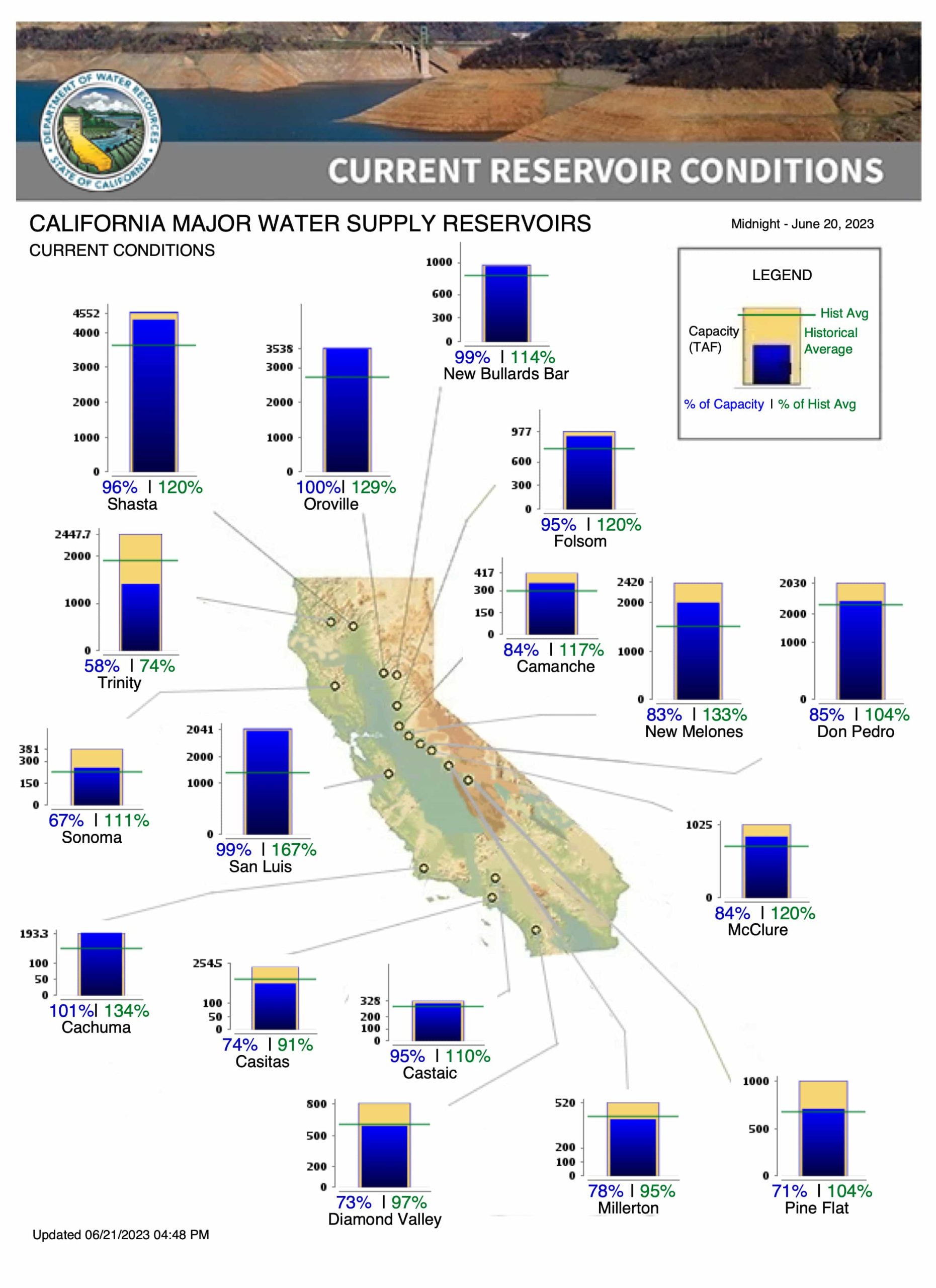
Images taken two years apart show the transformation of Lake Oroville in California as it rebounds from a severe drought that had brought its water levels to a critical low. The images capture the stark contrast between July 2021 and June 2023, showcasing its complete restoration to capacity for the first time since 2012.
Previously, Oroville’s water levels had reached an unprecedented low in late 2021, measuring a mere 628 feet, equivalent to 24 percent of its total capacity. However, the present situation paints an optimistic picture, with the reservoir now at full capacity, marking an extraordinary 129 percent increase compared to the normal levels observed during this time of the year.
According to Karla Nemeth, the Director of the California Department of Water Resources, the recent improvement in drought conditions within the state presents a striking divergence from the past three years. Nemeth expressed these sentiments during an interview with ABC News, highlighting the positive turn of events.
Lake Oroville, capable of holding up to 3.5 million acre-feet of water, primarily relies on the snowpack from the Sierra Nevada mountains for its replenishment, particularly in April. This year, the region experienced a surplus of snowpack, surpassing normal levels by as much as 200 percent. The abundant snowfall resulted from nearly a dozen atmospheric rivers that slammed the West Coast during winter.

An atmospheric river, characterized by a concentrated passage of moisture or water vapor in the air originating from the tropics, can bring substantial rainfall to the affected areas. The significant contribution of melting snowpack to the current water levels in California’s reservoirs further underscores their remarkable recovery.
Nemeth expressed her satisfaction at witnessing Lake Oroville and other reservoirs under the State Water Project, such as San Luis in Merced, reaching near or full capacity. For instance, San Luis Reservoir measures approximately 99 percent full, a substantial improvement from its historical average of 114 percent in April.
Contrasting with the situation just a year ago, when the reservoir stood at less than half capacity and continued to experience water loss throughout the warmer months, the recent surge in regional precipitation, snowfall, and flooding has transformed the surroundings of both reservoirs from arid, brown landscapes to lush, verdant vistas.
Shasta Lake, California’s largest reservoir approximately 120 miles north of Lake Oroville, is also nearing full capacity, reaching an impressive 97 percent last week.
The positive trajectory of water availability prompted the California Department of Water Resources to announce in April that the State Water Project would provide a 100 percent allocation for the first time in over 15 years. In light of this, officials are closely monitoring the strategic release of water from the reservoirs, ensuring a controlled flow to prevent flooding caused by the accelerated melting of the snowpack during the warmer months.
